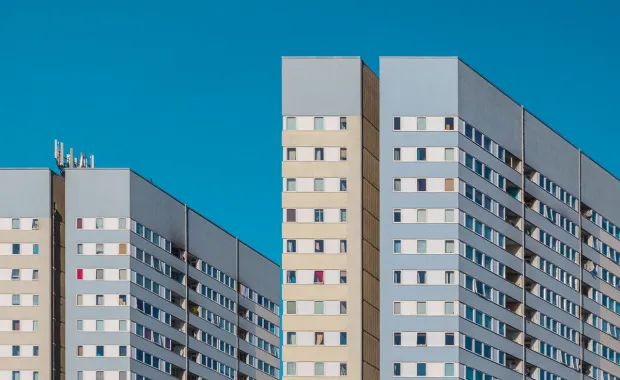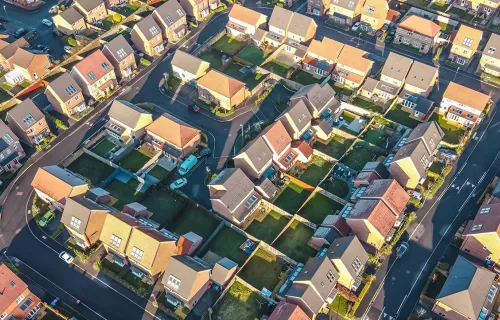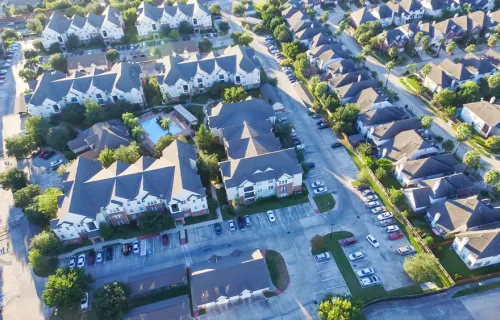There is a popular aphorism (thanks Google!) that is used often; a combination of events that come together and have a negative impact, all at the same time, is often referred to as ‘the perfect storm’.
The organisations that provide social housing in major cities in the UK (especially London) and that have multiple tower blocks in their charge are currently facing a perfect storm. The question is, what is this perfect storm that housing associations are facing and what is causing it? In truth, it’s a complicated and complex set of scenarios that are involved, but for illustrative purposes, here goes...
Things took a major turn for Housing Associations on 14th June 2017. The much publicised and maligned Grenfell Tower fire left housing associations with a huge problem, with similar tower blocks and equally flammable cladding in many of their properties. The cladding needs to be replaced, but at what cost and who pays? The cost is unknown at this stage but I imagine it will be a significant number.
Following Grenfell came the Hackitt Report and there is other legislation such as the Human Habitation Act, which requires housing providers to deliver a certain standard of home for its tenants. The drive to net zero is on the horizon. Legislation is thus pushing the cost base north as housing associations strive to meet the requirements laid out in the legislation.
If this wasn’t bad enough, in 2020 along comes Covid-19 in all its variants. Now housing associations need to provide their maintenance teams with effective PPE; what used to be two maintenance people in a single van is now two maintenance people in a van each because of social distancing. And what about the tenant? For those that lost jobs or were placed on furlough, or those struggling with the 5-week gap in receiving universal credit, they are faced with an impossible choice: do they pay the rent, heating or food? How forceful should collections activity be under these circumstances?
Furthermore (and this is a difficult question to answer given the perfect storm), what should be the priority for housing associations: tenants, cladding, legislation, business as usual, or all of the above and more?
Okay, the picture of bad news picture has been painted, so let’s examine where the good news is. Thankfully there is lots of good news to be had, but housing associations will need to act and think a bit differently to ensure some of the potential fixes available to them are not kicked into the long grass. Technology holds the key to sorting out some (but not all) of the problems. As an example, maintenance teams turning up to residences but not gaining access creates a cost to the housing association that can be monetised. Tenants waiting in for a maintenance team that doesn’t show up creates a bad tenant experience (made worse if the tenant is on a zero hours contract and lost a day’s income).
Off the shelf solutions exist that can connect the maintenance team to the tenant directly, without the need for call centre intervention (which is in itself clunky and inefficient communication flow). This would allow maintenance teams to send text alerts to tenants letting them know that they are on the way and will be there in x minutes. It would also allow the tenants to share relevant information the team should know, for example a text letting them know ‘I’m running 5 minutes late but I will be there soon’ would ensure a potential no access issue can be avoided. Both sides benefit; the housing association does not incur an additional visit cost, and the tenant gets the service expected at the time they expected it. At the same time quick and easy feedback can be taken electronically, enabling positive feedback to be captured in real time and act as a counterpoint to Trust Pilot reviews (the majority of which tend to be negative).
For many of the problems that housing associations face, there is an off the shelf technology solution available. Of course not everything can be done all at once, so the trick is to focus on identifying ‘the high impact, easier to do’ priorities. There are organisations that can help housing associations do this and in so doing reduce its cost base, create funds to help with the challenge of cladding and deliver an improved tenant experience. I could name one, but modesty forbids.
If you’d like to have a conversation around the types of technology suited for use by the Housing Association sphere, or a wider conversation around how technology can be leveraged to solve every day issues, please get in touch.






